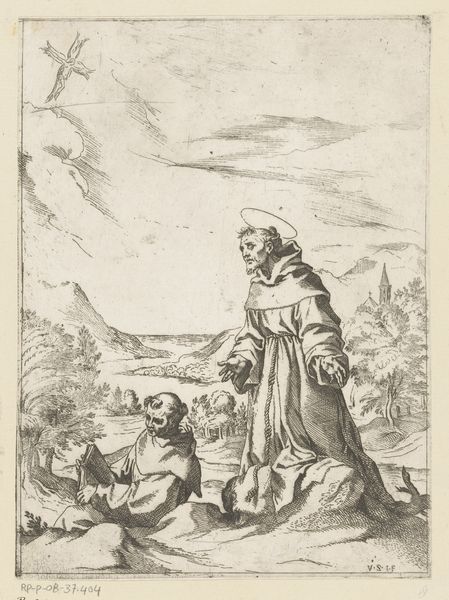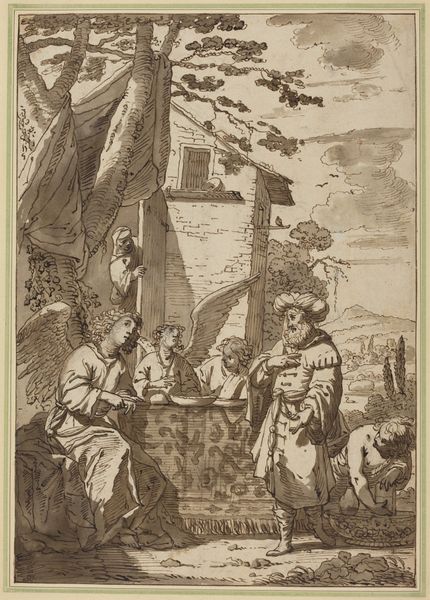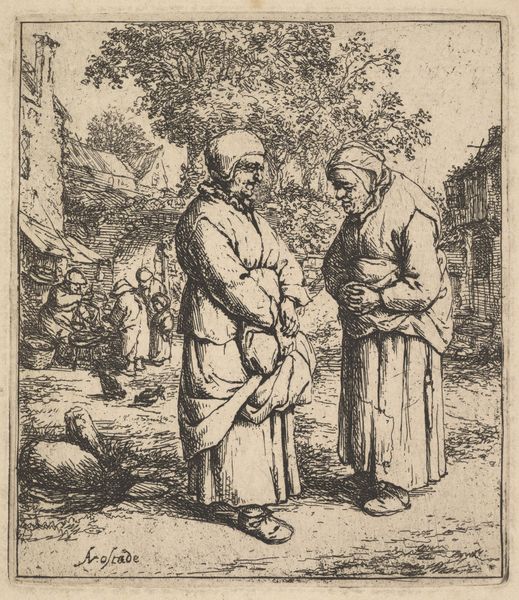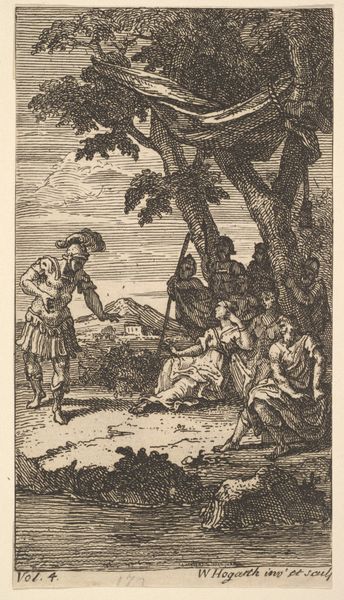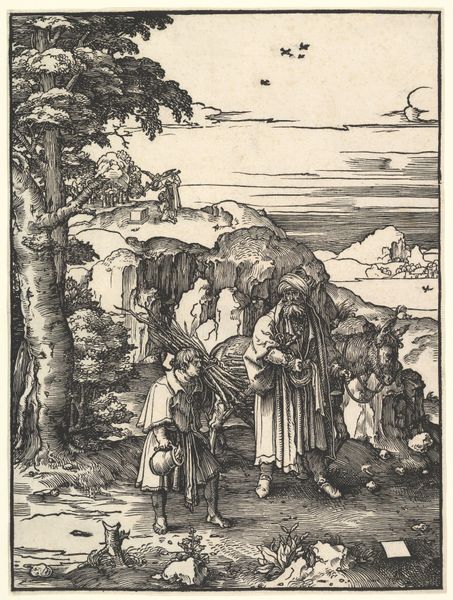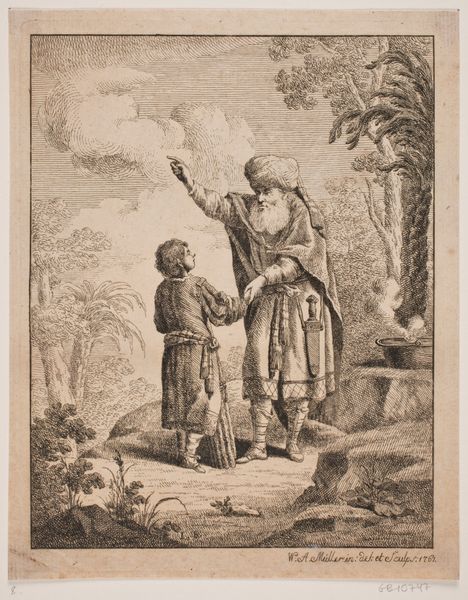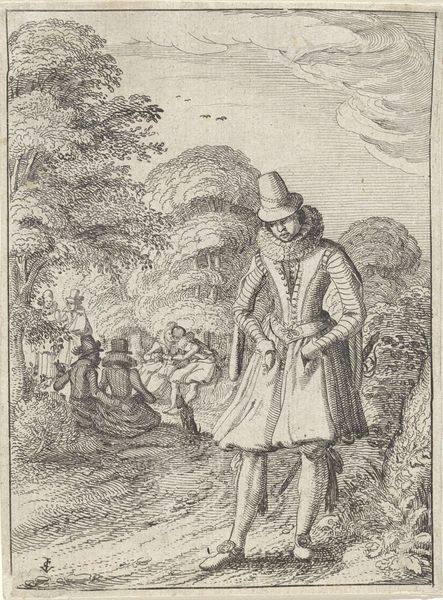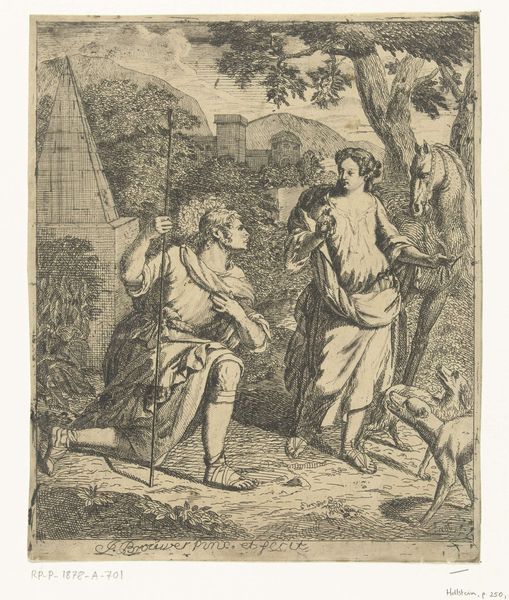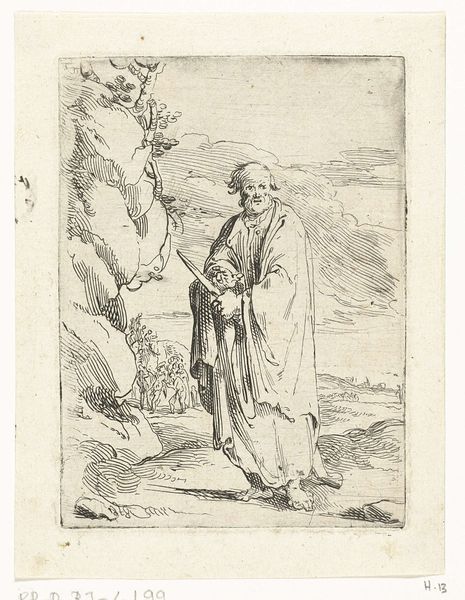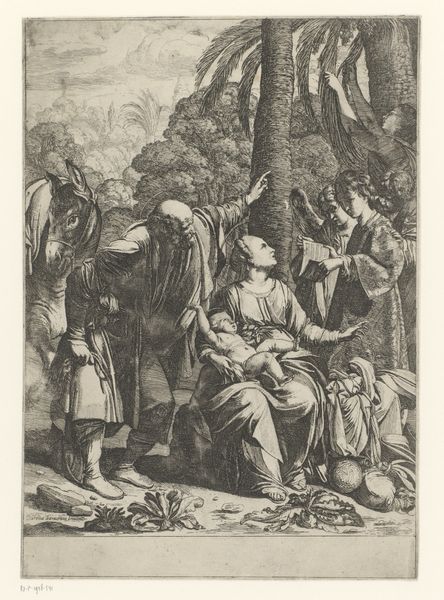
drawing, paper, ink
#
drawing
#
baroque
#
figuration
#
paper
#
personal sketchbook
#
ink
#
15_18th-century
#
history-painting
Copyright: Public Domain
Curator: Here we have an ink drawing titled "Abrahams Verstoßung der Hagar," which translates to "Abraham Casting Out Hagar," housed right here at the Städel Museum, and it's attributed to Christian Wilhelm Ernst Dietrich. Editor: Woah, right off the bat, this scene just feels drenched in drama. You can almost feel the tense silence between the figures, with just this swirling, landscape adding to the uneasiness. Curator: The artwork presents a pivotal moment from the Book of Genesis. We're witnessing Abraham banishing Hagar, the mother of his son Ishmael, along with their child. This was due to Sarah's, Abraham’s wife, jealousy and demand, impacting inheritance and societal power structures. Editor: Gosh, you can feel Hagar's despair. Her hand’s on her face – the universal sign of heartbreak and “how could you?!” Even the kid looks shell-shocked. It's all rendered with such delicate strokes. Did Dietrich capture an actual emotional breakdown on paper? Curator: Well, Dietrich’s use of ink and the baroque style were popular during the 18th century. He effectively conveyed emotional complexity and narrative drama, speaking to the contemporary patriarchal structures that would prioritize a woman’s marital status over her own agency. We might discuss it today using terms like reproductive rights, female servitude or perhaps displacement due to racial discrimination. Editor: It hits me that art from ages ago still sparks conversation around complex topics today. Also the perspective. What do you call it? Atmosphere Perspective or Aerial Perspective? That distant, lighter horizon really amplifies the intimacy of the main scene. It makes them pop. Curator: Absolutely. Aerial perspective contributes depth but it can also remind us of the distant past – its different moral codes that contrast sharply with today's values, especially for women. Editor: I think that by inviting conversations about injustice, even if that was not the immediate scope of the artwork or artist's focus, this scene pushes us to interrogate how far, or how little, social scripts have changed. It is very potent to invite audiences into asking more of the status quo and its many imbalances of power. Curator: It is indeed very revealing, from historical standpoint, as from present-day awareness and engagement with injustice around us. Editor: A powerful story, rendered in strokes of vulnerability that somehow transcend time.
Comments
No comments
Be the first to comment and join the conversation on the ultimate creative platform.
